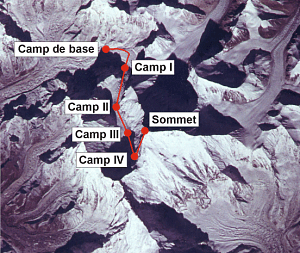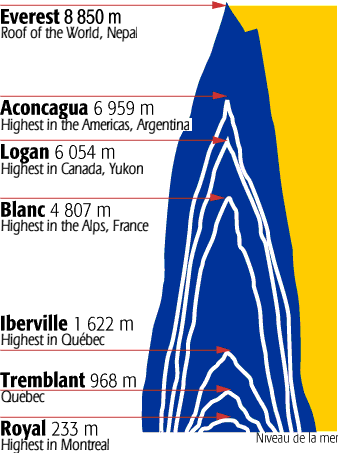
Summit (8 850m) – Roof of the world, May 5, 1999
Camp IV (8 000m) – South Col
Camp III (7 400m) – On the Lhotse face
Camp II (6 500m) – In the Western Cwn
Camp I (6 100m) – Above the Icefall
Base camp (5 400m) – On the glacial moraine

Summit (8 850m) – Roof of the world, May 5, 1999
Camp IV (8 000m) – South Col
Camp III (7 400m) – On the Lhotse face
Camp II (6 500m) – In the Western Cwn
Camp I (6 100m) – Above the Icefall
Base camp (5 400m) – On the glacial moraine

Nepal is a rectangular country, 150km wide by 800km long, between Tibet (China) and India. The Himalayas in the north of the country (10 mountains over 8 000 metres high, more than 100 over 7 000m) act as a weather barrier and a defence. Over a distance of 25km, the altitude can vary from 6 000m. Mountains can be crossed via rivers (often hemmed in by steep walls) and cols at 4 500 to 6 000 metres.
35% of the country is below 1000m. The Terai is a low-lying region bordering India, with plains, jungles and swanps where you can see rhinoceros, elephants, tigers…
Time difference
9 hours and 45 minutes difference between Montreal and Kathmandu (GMT : +5h45).
Over 20 hours by air.
Population
Religions